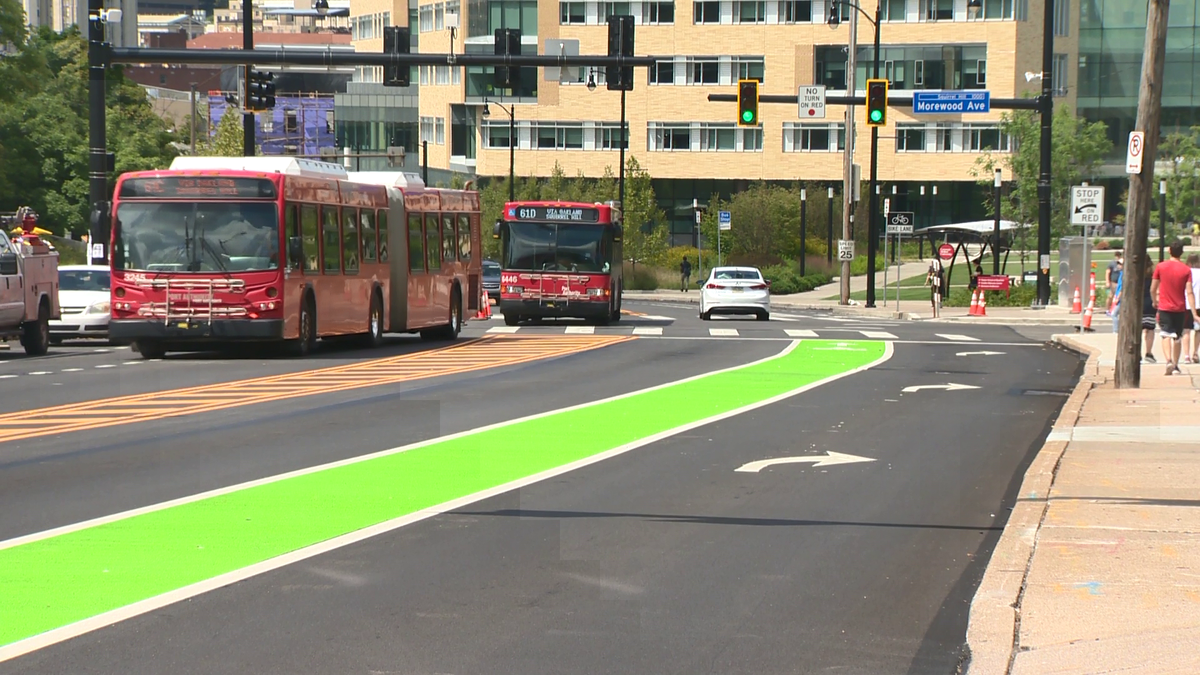Possibly the most difficult part of cycling in traffic is navigating intersections.
In jurisdictions that don't have some form of the "Idaho stop," cyclists are expected to follow the traffic signals as either vehicles or pedestrians. One problem with that is that a cyclist proceeding straight through an intersection is in danger of getting hit by turning vehicles--especially right-turning trucks and buses, as their drivers often do not see cyclists who are far to the right of them. Another problem is that in very large intersections, it is all but impossible to turn left without running into danger from oncoming traffic.
Of course, the "Idaho stop" is meant to remedy the first problem: Treating a red light as a "stop" sign or a "stop" sign as a "yield" sign (which is what the Idaho stop is, in essence) allows the cyclist to get out ahead of drivers who are making right turns. As for the second problem, a new solution is being tried out in Pittsburgh.
In the city's Oakland neighborhood, boxes--"bays"--are being carved out in intersections. Cyclists proceed to them and wait for their signal--which is activated by radar designed to detect their presence--before continuing through the intersection.

I, for one, will be very interested to see how this idea works out. In principle, it sounds good, though I must admit that I'm skeptical about a "bay" in the middle of an intersection that is separated from traffic only by lines of paint.
In jurisdictions that don't have some form of the "Idaho stop," cyclists are expected to follow the traffic signals as either vehicles or pedestrians. One problem with that is that a cyclist proceeding straight through an intersection is in danger of getting hit by turning vehicles--especially right-turning trucks and buses, as their drivers often do not see cyclists who are far to the right of them. Another problem is that in very large intersections, it is all but impossible to turn left without running into danger from oncoming traffic.
Of course, the "Idaho stop" is meant to remedy the first problem: Treating a red light as a "stop" sign or a "stop" sign as a "yield" sign (which is what the Idaho stop is, in essence) allows the cyclist to get out ahead of drivers who are making right turns. As for the second problem, a new solution is being tried out in Pittsburgh.
In the city's Oakland neighborhood, boxes--"bays"--are being carved out in intersections. Cyclists proceed to them and wait for their signal--which is activated by radar designed to detect their presence--before continuing through the intersection.

I, for one, will be very interested to see how this idea works out. In principle, it sounds good, though I must admit that I'm skeptical about a "bay" in the middle of an intersection that is separated from traffic only by lines of paint.



